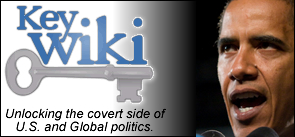Mesmerized by the Bear: The Great Soviet Deception
By: Brent Parrish The Right Planet Part 1 Part 2 This is a rather prophetic lecture, if you ask...
Read MoreBy: Brent Parrish The Right Planet Part 1 Part 2 This is a rather prophetic lecture, if you ask...
Read Moreby TMH | May 20, 2015 | Authors, Constitution, Financial, History, Politics, Survival, Taxation, Terresa Monroe-Hamilton | 1 |
By: Terresa Monroe-Hamilton Red Bill de Blasio just unveiled a 13-point national “Progressive...
Read Moreby TMH | Mar 8, 2015 | Authors, Constitution, History, Military, Politics, Survival, Trevor Loudon | 0 |
Hat Tip: Nelson Abdullah By: Ginni Thomas The Daily Caller Libertarian New Zealander, author and...
Read Moreby TMH | Jan 31, 2015 | Authors, Constitution, History, Politics, Survival, Terresa Monroe-Hamilton | 0 |
By: Trevor Loudon New Zeal The second half of 2014 was marked by a very intense anti-police...
Read MoreAmerica’s Survival Alexander G. Markovsky is a Russian émigré who holds degrees in economics...
Read Moreby TMH | Jan 7, 2015 | American Stuff, Constitution, History, Politics, Survival | 0 |
America’s Survival Dear Friend of America’s Survival, Inc.: Republicans like John...
Read Moreby TMH | Jan 1, 2015 | 2nd Amendment, Constitution, Financial, History, Military, Politics, Survival | 0 |
By: Bill Flax Forbes (published with permission) “The line between fascism and Fabian socialism is...
Read MoreBy: Brent Parrish The Right Planet There probably is not a more loaded word these days than...
Read More

My beloved husband,
GARRY HAMILTON,
passed away
on September 24th, 2022.
I will love you always.

